13 Best Herbs for Juicing (Plus Recommended Combinations)
Juicing fruits and vegetables is a convenient way to consume a broad range of valuable nutrients. Adding herbs to your juices can boost their health benefits and enhance their flavors in whole new ways! In this article, I share the best herbs to include in your juicing recipes plus some unique combinations to try.
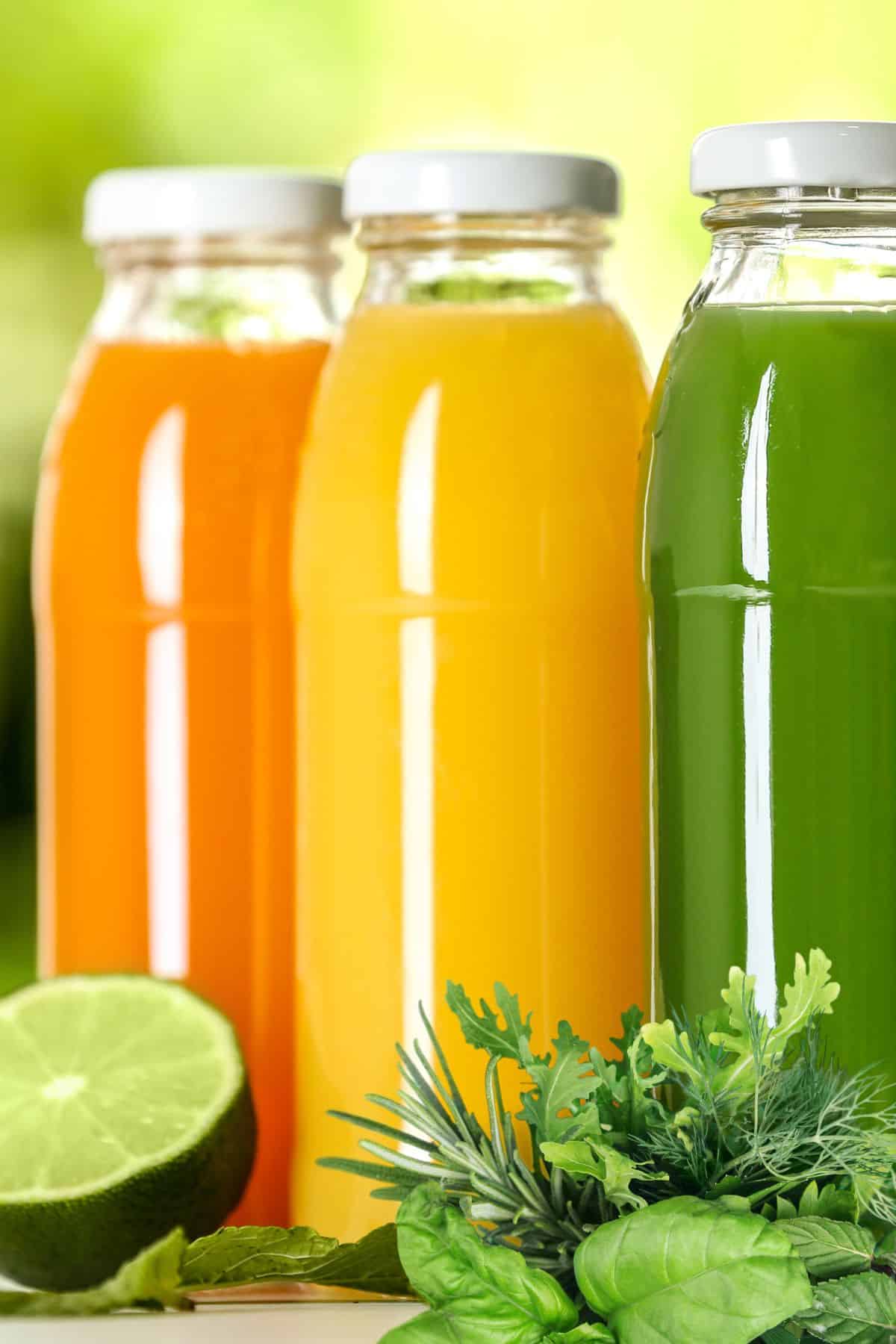
I’ve been juicing vegetables for over a decade now, and I continue to find new and interesting combinations of veggies, fruits and herbs to use.
Turns out, herbs make an excellent addition to vegetable juices, and are incredibly healthy too. You can save money on juicing by growing your own herbs.
I hope you enjoy this article and find some inspiration for making new healthy juices using culinary herbs. Start with a few to your juicing routine until you find your favorites.
Best Herbs for Juicing
1. Basil
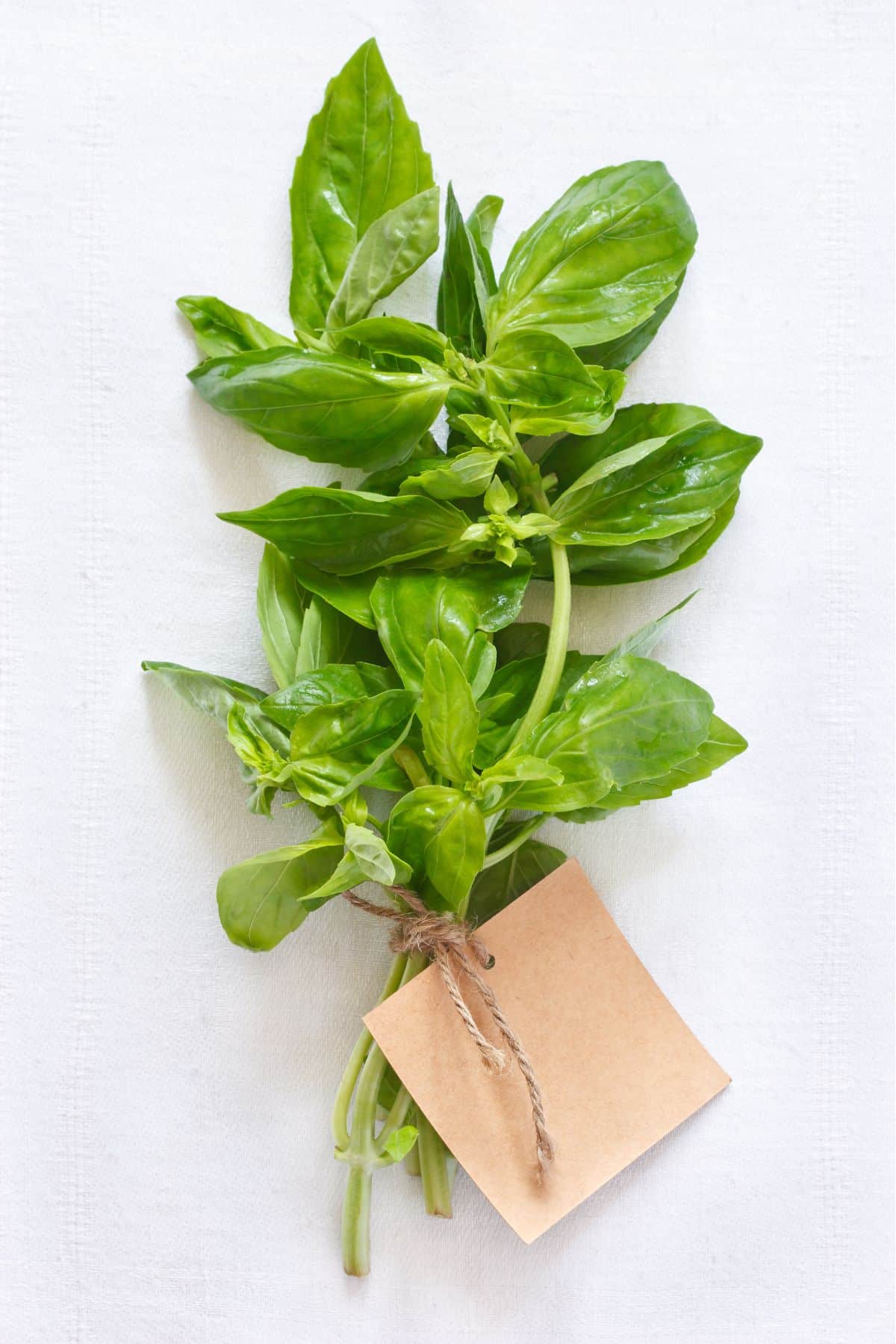
Widely available in grocery stores and easy to grow at home in gardens or pots, basil has a sweet and slightly spicy flavor, with hints of mint and anise.
Particularly popular in Italian dishes, this leafy green herb is an excellent source of natural antioxidants.
Basil is safe to consume in small amounts but is high in vitamin K. Speak to your doctor if you are taking blood-thinning drugs such as warfarin, as large amounts of basil could interfere with your medication.
Recommended Juicing Combinations
Basil is wonderful paired with strawberries and lime, producing a sweet, spicy, tangy drink packed with fresh flavor. It also tastes great with fresh watermelon and a splash of lemon.
For a nutritious, savory blend, combine fresh basil with ripe tomatoes and a hint of garlic. See my full tomato juice recipe.
2. Cilantro (Coriander)
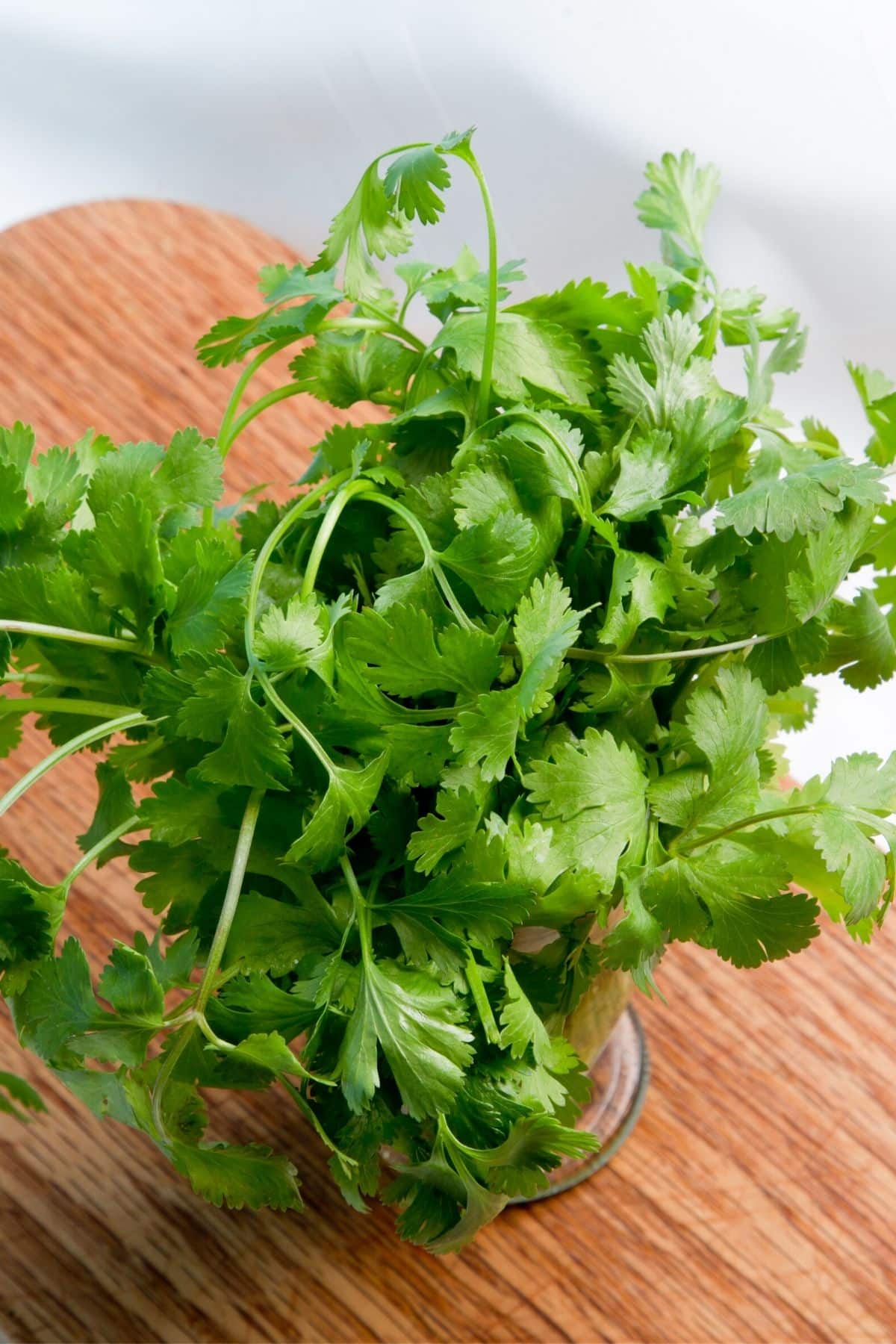
Cilantro (also known as coriander in some parts of the world) is another widely available fresh herb that is easy to grow at home. It has a pungent citrusy, peppery taste that many people love, although some people find it a soapy!
Cilantro is highly nutritious – rich in antioxidants and with antibacterial properties – and a great favorite in Mexican, Indian, and Middle Eastern cuisine.
It’s safe to consume in regular amounts, but you may need to avoid it if you are allergic to fennel or dill as all three plants are from the same family.
Recommended Juicing Combinations
For a sweet and delicious blend that’s great for your digestion, try juicing cilantro with fresh pineapple and a dash of lime.
Cilantro combined with mango and lime produces a zesty, tropical flavor, or juice it with carrots, apple, and lemon juice for a sweet, slightly earthy blend. I absolutely love cilantro in all of my green juices!
3. Dandelion greens
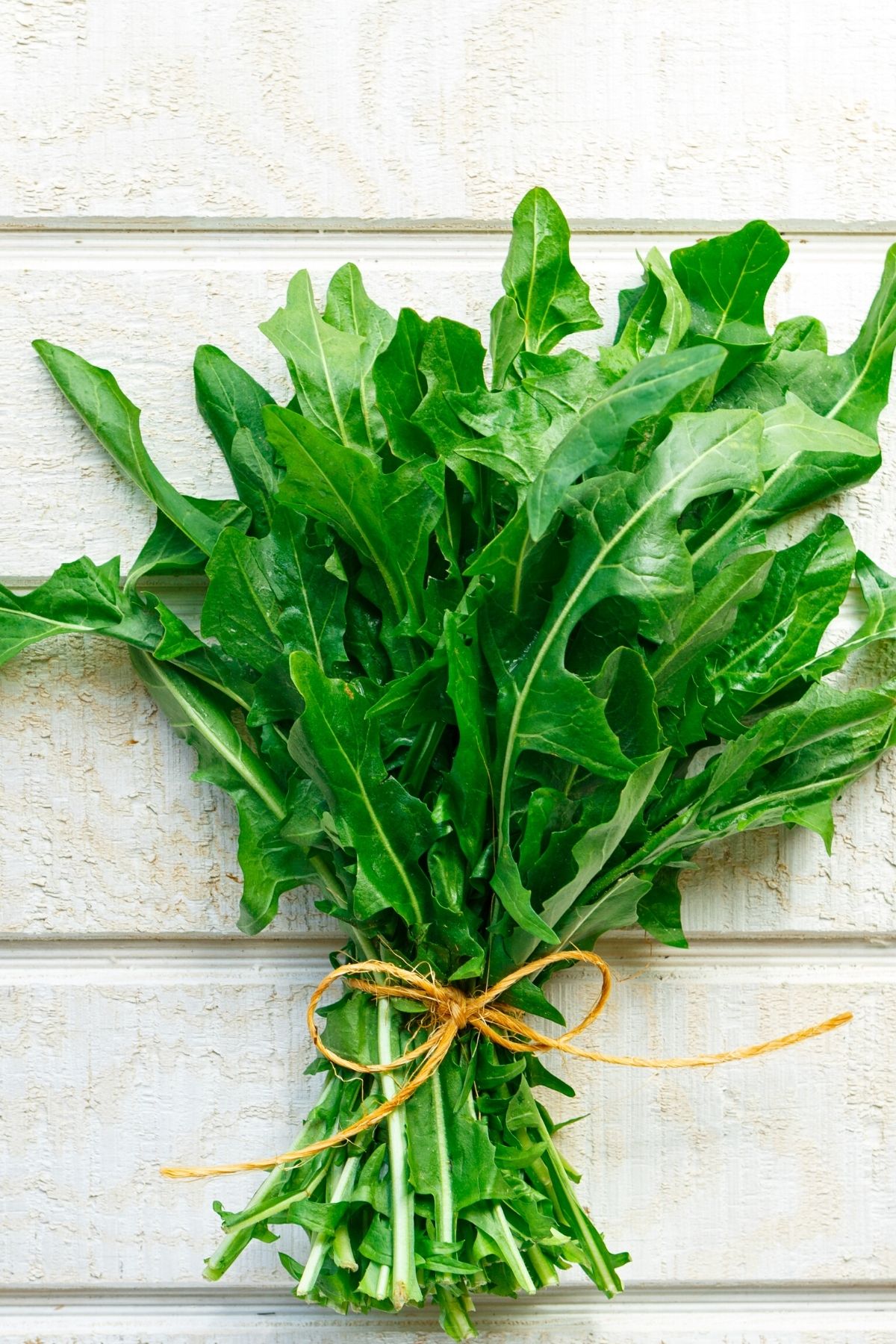
While many may consider them weeds, dandelion greens are actually highly nutritious, rich in vitamin A, vitamin C, and vitamin K, and packed with minerals including iron, calcium, magnesium, and potassium.
They are dark leafy greens and will add a slightly bitter taste to your juice recipes.
Helpful for your digestion and immune system, they are safe for most people, but you should speak to your healthcare provider before consuming them if you have kidney disease, gallbladder problems, blood pressure issues, or gallstones.
You can often find dandelion greens at farmer’s markets, health food stores, and some grocery stores. You can even gather them in the wild, but it’s important to only take them from areas free of pesticides and other pollutants.
Dandelion leaves have a strong, bitter flavor similar to arugula and are ideal for adding a sharp taste to your juices.
Recommended Juicing Combinations
Try blending dandelion greens with apple and a dash of lemon for a refreshing, antioxidant-rich juice, or – for a great digestion booster – combine it with mild-tasting cucumber and spicy ginger.
Alternatively, mix dandelion greens with sweet, nutritious carrots and orange juice. This will help cover the bitter taste of your green juice recipe.
4. Lavender

This might seem a surprising choice, but there are lots of good reasons to consider including this fragrant herb on your juicing menu!
Part of the mint family, lavender has a sweet yet floral flavor with mint and rosemary notes. You can grow it in your garden, or buy it fresh from your local farmer’s market during its growing season.
Rich in antioxidants, it may help ease digestive issues such as nausea and gas and is safe for most people in small quantities. Lavender has a long history with herbal medicines and is also used in herbal teas.
Its effects during pregnancy and breastfeeding have not been widely studied, however, so you may wish to speak to your healthcare provider before enjoying it regularly.
Recommended Juicing Combinations
Because of its floral notes, lavender works best in sweet juices. Try blending it with blueberries for an antioxidant-rich treat, or with pear and mint for a deliciously sweet flavor.
Lavender also pairs well with apple and a touch of lemon, creating a sweet drink with a citrusy tang!
5. Lemon balm
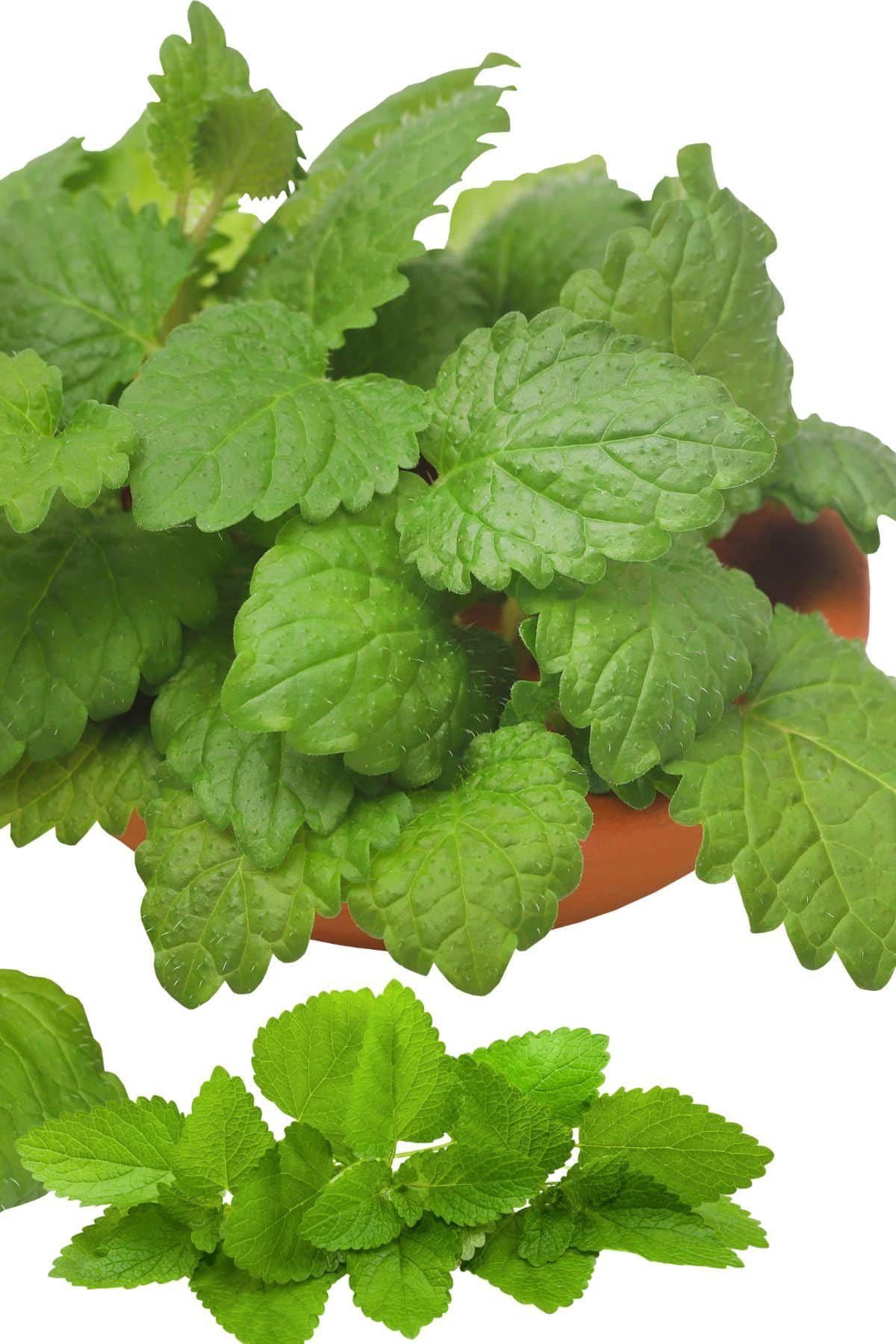
Lemon balm is part of the mint family and releases a lovely, lemony smell from its heart-shaped leaves. It has an interesting flavor – a perfect combination of mint and sweet lemon – and you can find it sold fresh in some grocery stores.
You can also buy lemon balm plants from the garden center – they are easy to grow and mean you’ll always have some to hand!
A popular stress reliever, lemon balm is safe for most people and may even help relieve indigestion and ease menstrual cramps.
However, some sources suggest avoiding lemon balm if you are pregnant or breastfeeding.
Recommended Juicing Combinations
For a sweet, refreshing summer drink, try blending lemon balm with fresh, ripe, strawberries – or, if you like a little spice – combine it with apple and ginger.
Another hydrating combination for fresh juice is lemon balm with fresh-tasting cucumber and a hint of lime. This really jazzes up regular cucumber juice.
6. Lemongrass

A staple in Asian cuisine, lemongrass has a deliciously tangy flavor that combines lemon with a hint of ginger and mint.
It is available fresh in most grocery stores and is packed with health benefits, including antimicrobial and anti-inflammatory properties. It’s good for your digestion, too, and may even help lower your cholesterol.
Lemongrass is considered safe for most people, but it is not recommended if you are pregnant or breastfeeding.
Recommended Juicing Combinations
For a refreshing, tropical drink, blend lemongrass with pineapple (it’s good for your digestion, too). Lemongrass is a low yield herb, but it adds a ton of flavor. Start with just 1-2 stalks.
A mix of lemongrass, coconut water, and lime juice makes another good tropical treat! Lemongrass also works very well with sweet, earthy carrots and a splash of lemon. I also love Lemongrass Tea in the cooler months.
7. Mint
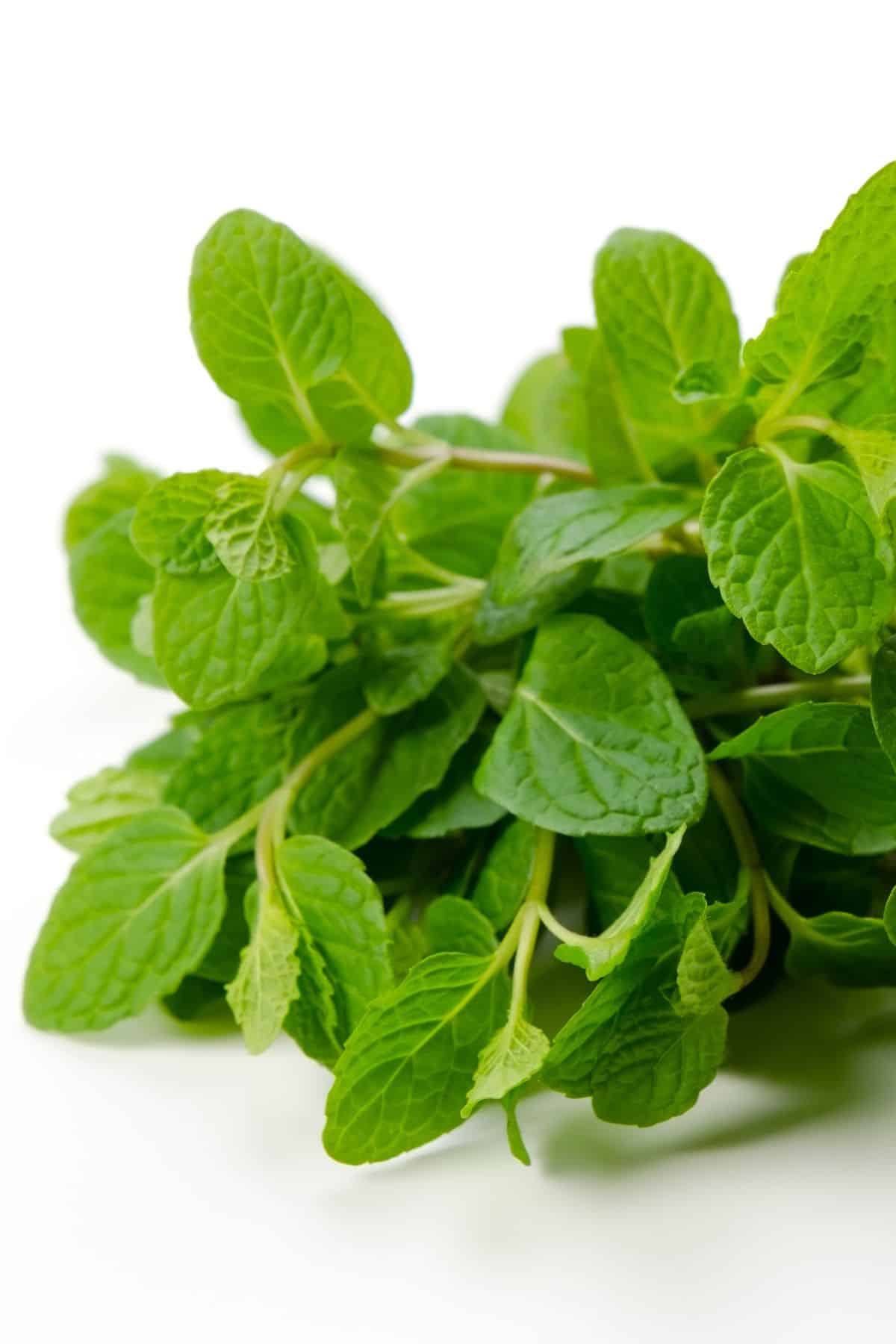
Cooling and aromatic, mint is a common herb that you can find in most grocery stores, or easily grow yourself. There are different varieties of mint, from spearmint to regular mint.
It’s a good source of antioxidants and vitamin A and is considered safe for most people, although eating it in very large quantities can aggravate the symptoms of gastroesophageal reflux disease (GERD).
Recommended Juicing Combinations
Cucumber and apple blended with mint is a great combination – it has a mild, fresh flavor perfect for a sunny day!
For a big boost of antioxidants, try combining it with beetroot and blackberry instead, or create an unbeatable green juice by blending mint with spinach and kiwifruit.
8. Oregano
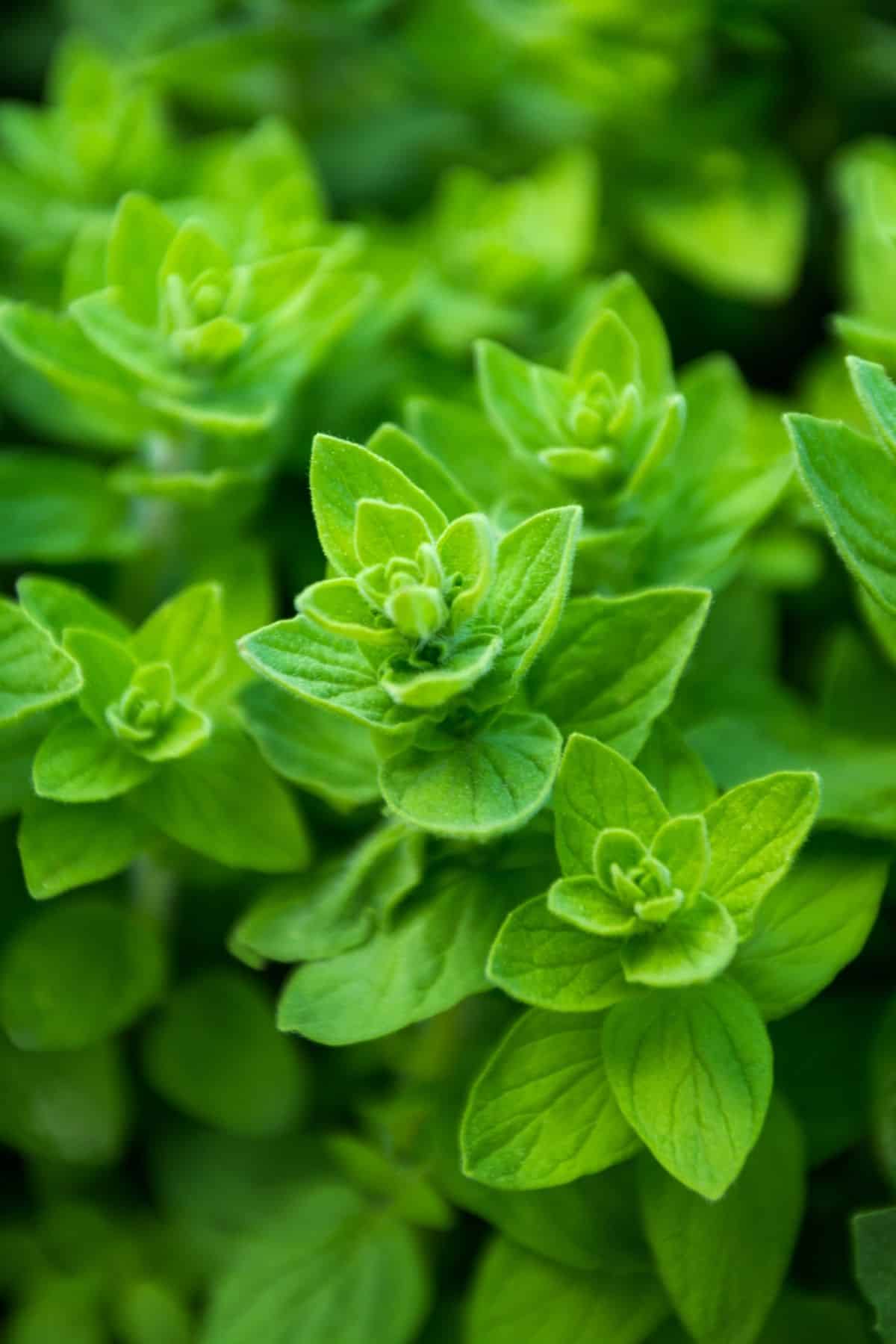
Robust, peppery, and slightly bitter, oregano adds an interesting depth of flavor to some juices.
Fresh oregano is easy to find at most grocery stores and – if you’re more familiar with the strong flavor of dried oregano – you’ll be pleased to hear that it is far less concentrated. Still, the best way is to start with just a bit and then add more if you like it.
Oregano has some great health benefits, helping reduce inflammation, and is packed with vitamin K for bone health – plus fresh oregano leaves are considered safe for most people when consumed in regular amounts.
Recommended Juicing Combinations
Oregano and fresh tomatoes make a classic combination that works perfectly, especially if you add celery for its fresh, slightly salty flavor.
You can also try blending oregano with apples and carrots for a sweet mixture with a sharp bite, or with cucumber and lemon juice for a hydrating drink with a refreshing pop of citrus.
9. Parsley
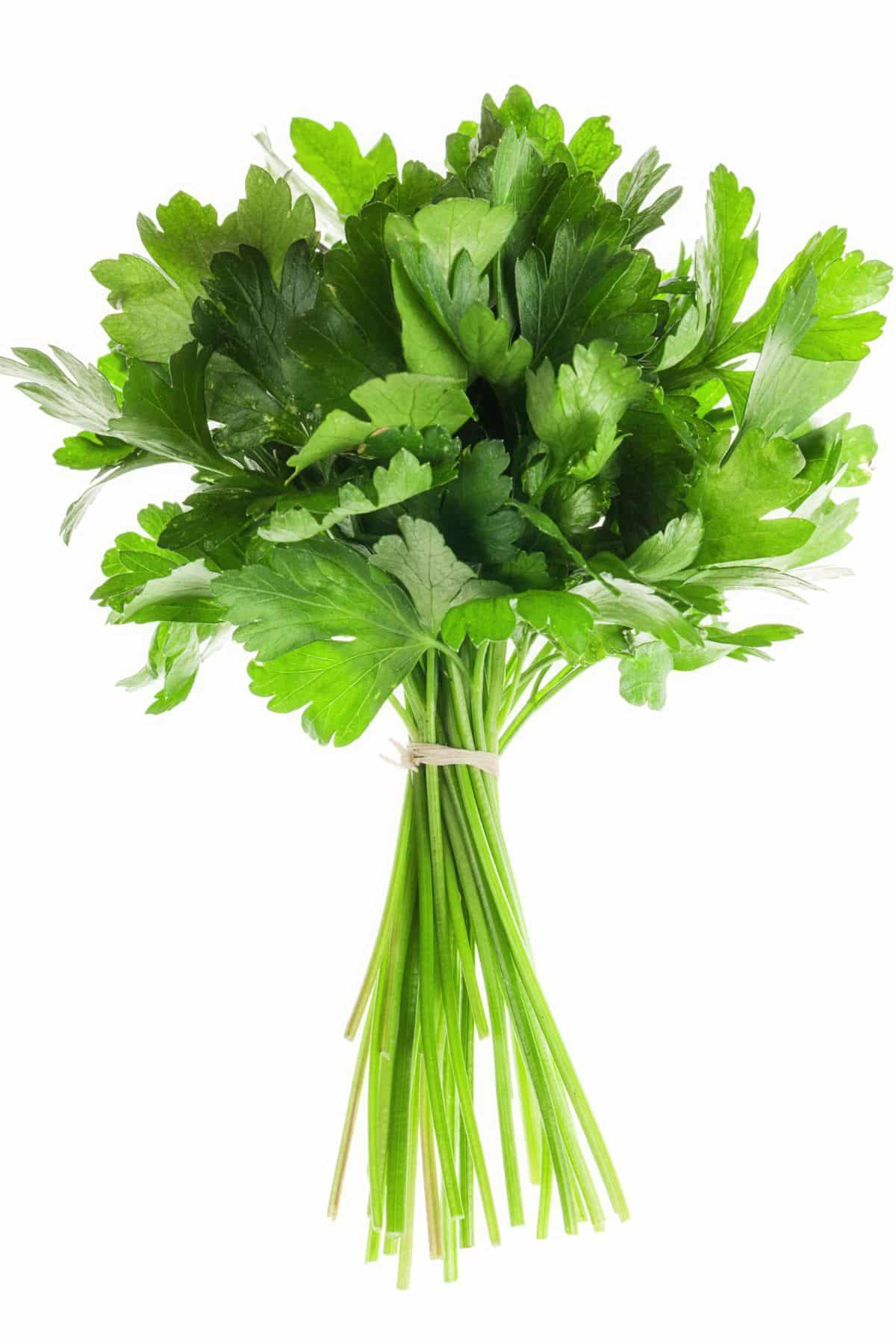
Parsley is often used as a garnish in American and European cuisine. It has a slightly bitter, peppery flavor and is available in grocery stores all year round.
Packed with vitamins A, C, and K – plus a healthy dose of iron – parsley supports the health of your kidneys and can help prevent kidney stones. It has antibacterial properties, too, and can help reduce inflammation.
Eating it in small amounts is considered safe, but avoid large amounts of parsley during pregnancy as it can trigger uterine contractions.
Recommended Juicing Combinations
For a nutrient-rich drink with a hint of spice, try blending parsley with carrots and ginger. If you’d prefer something sweeter, combine it with watermelon and fresh mint, or pineapple and coconut water.
Or, go for it and try my recipe for Parsley Juice for the ultimate in herbal juice.
10. Peppermint
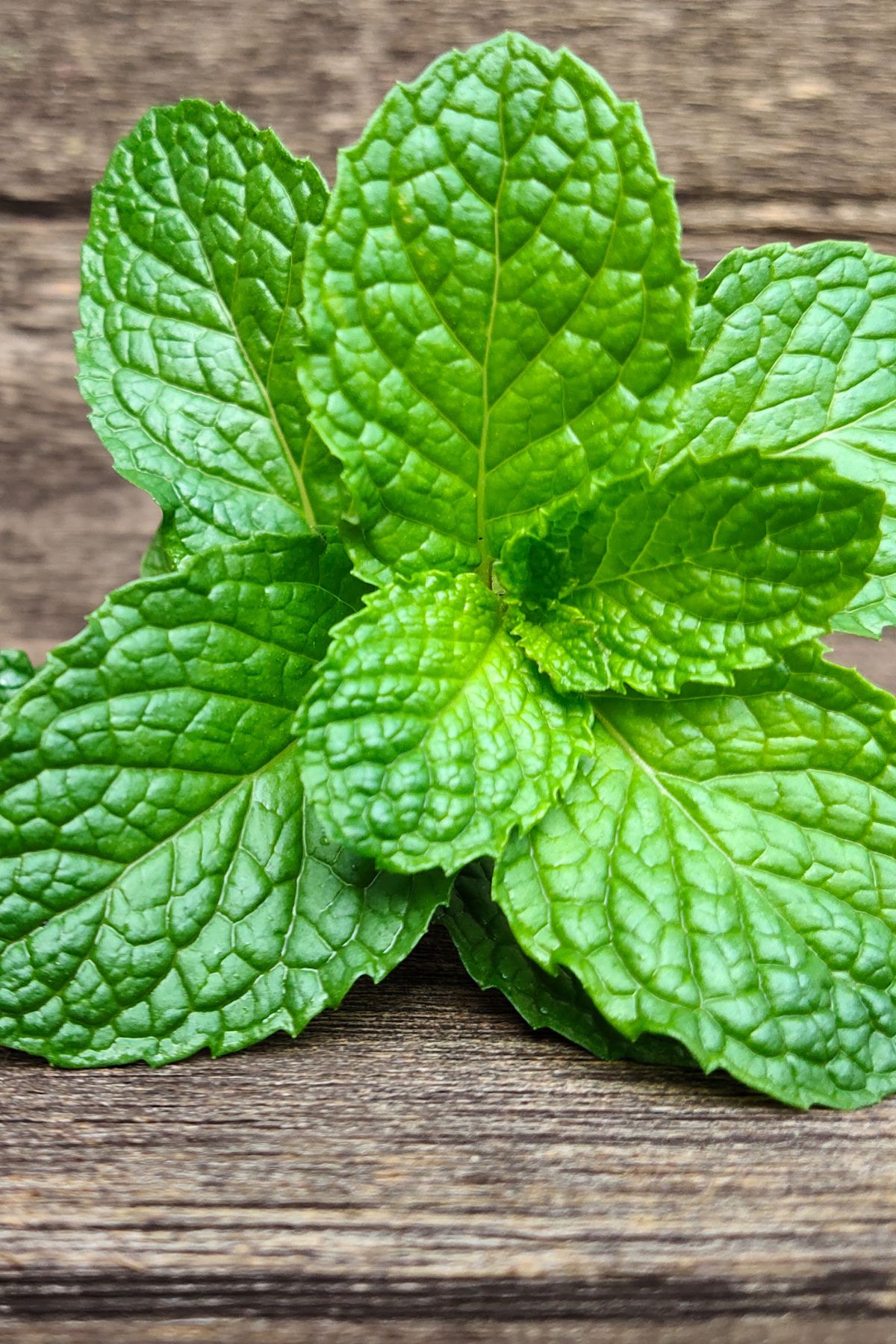
Peppermint is a cross between watermint and spearmint. It’s quite different from typical garden mint, with a higher menthol content giving it a more intense minty flavor and pronounced cooling effect.
You can easily grow fresh peppermint in your vegetable garden or find it in some grocery stores.
The biggest benefit of peppermint is that the menthol it contains helps relax the muscles in your digestive system, easing discomfort.
While peppermint oil is not recommended for pregnant and breastfeeding women, peppermint leaves are generally considered safe for most people.
Recommended Juicing Combinations
Try blending fresh peppermint leaves with green apples for a tart yet sweet drink to help digestion, or combine it with hydrating fresh cucumber and a dash of lime for a cooling juice on a hot day.
Trying to boost your antioxidant intake? Then blend peppermint with blueberries and sweet, earthy beets.
11. Rosemary
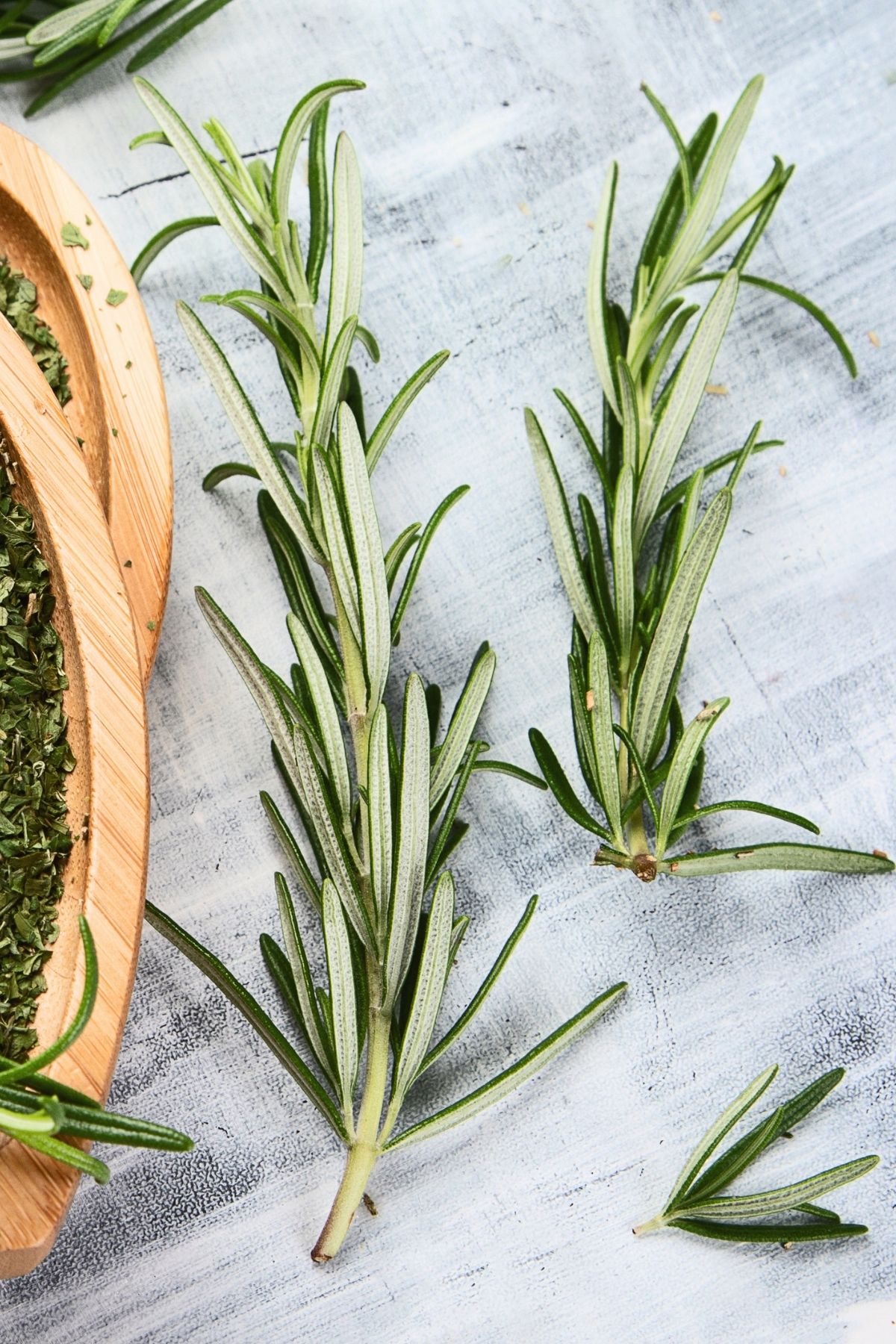
Easy to find in grocery stores, rosemary is an evergreen herb with a woody stem and needle-like leaves. It has a very distinctive flavor – aromatic with hints of pine and lemon.
Use it sparingly as it is quite pungent and a little goes a long way! Still, it’s a great addition to herbal juices.
Rosemary is a nutritional powerhouse, known to relieve pain, boost memory, and with anti-inflammatory properties. I love it in my Rosemary Coffee recipe!
It is safe in the small quantities used in food preparation, but you should avoid eating it in excessive amounts during pregnancy as it may stimulate uterine contractions.
Recommended Juicing Combinations
Rosemary pairs perfectly with the tangy flavor of grapefruit and also works well with apple and celery, its intense flavor balancing the sweetness.
Alternatively, blend it with fresh carrots and add a squeeze of lemon juice.
12. Sage
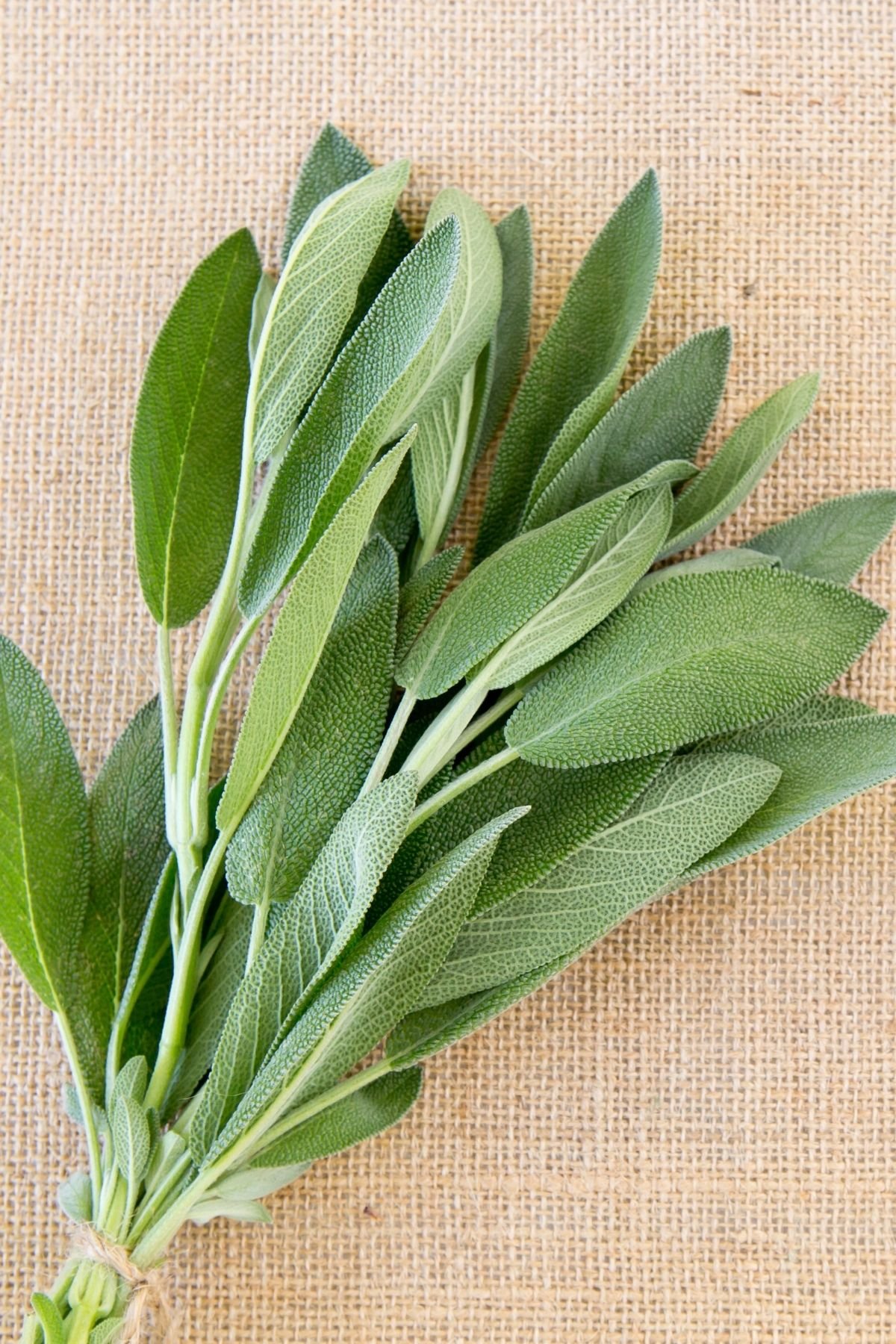
Part of the mint family, sage has fuzzy green leaves and a strong, earthy flavor with notes of pepper and mint.
It’s widely available in grocery stores and grows easily in pots, so you can always have some on hand at home.
A rich source of antioxidants, sage is high in vitamin K. may improve insulin sensitivity, and may even help lower your cholesterol levels.
Although safe for most people, it should be avoided in large amounts during pregnancy. Additionally, some types of sage contain a compound called thujone which may be toxic to the brain, but only when consumed in very large quantities.
Recommended Juicing Combinations
Sage has a robust flavor that mellows well when you blend it with both apple and cucumber.
It also tastes great with carrot and orange juice, or a mixture of pear and ginger, providing a warming drink with a subtle sweet flavors.
13. Thyme
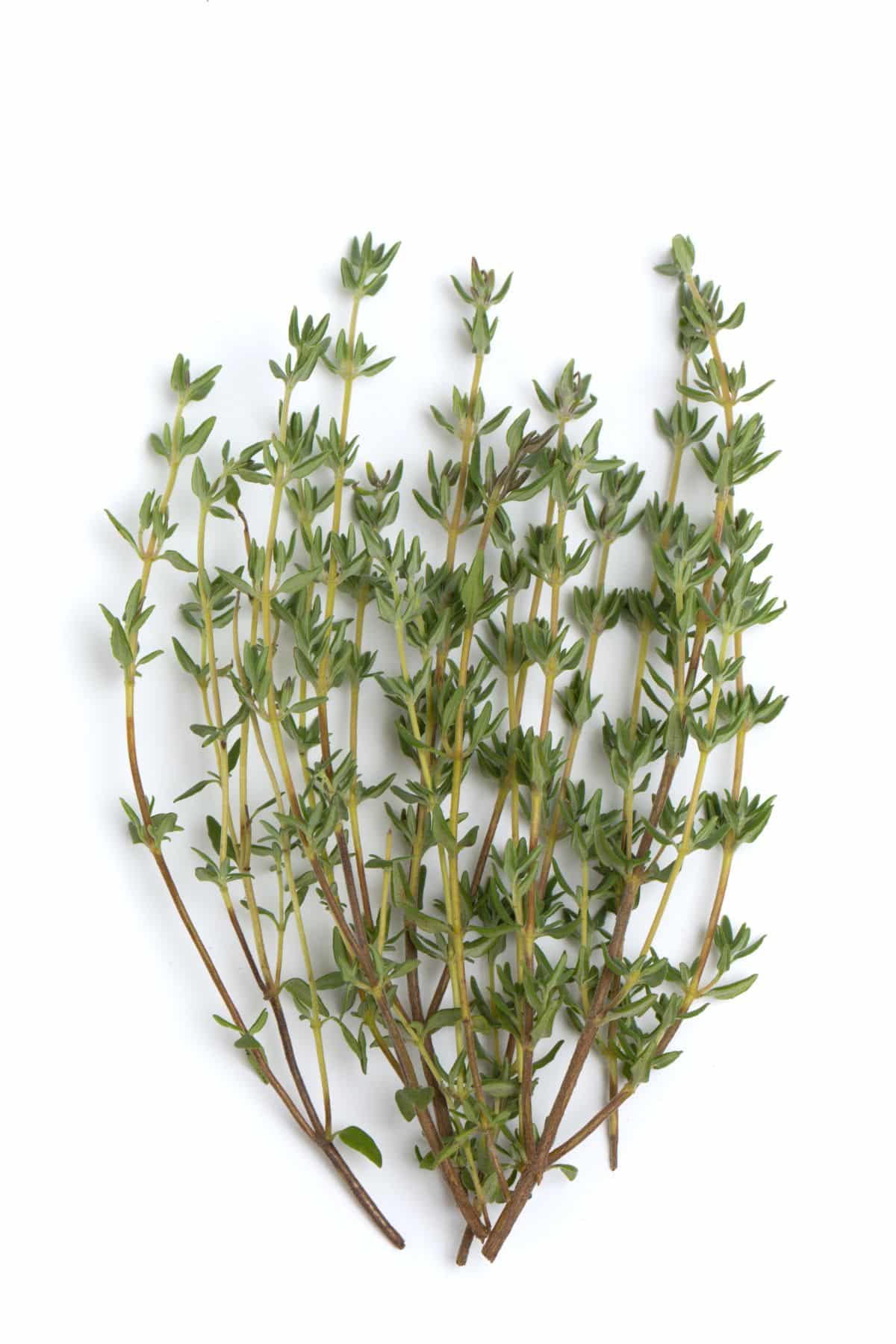
Thyme is readily available in grocery stores and has an earthy flavor with mint and lemon notes.
A perennial shrub and part of the mint family, it is more subtle than herbs like rosemary and won’t dominate the flavors of the other ingredients it’s blended with.
Thyme has long been used in traditional medicine and is packed with useful nutrients, including vitamins A and C, copper, fiber, iron, and manganese. It is considered safe for most people when used in small amounts.
Recommended Juicing Combinations
Thyme’s versatility means it pairs well with a range of ingredients. It tastes wonderful blended with watermelon and mint – a sweet and refreshing combination – and is equally good with carrots and apples.
If you have a cold and need a boost, try blending thyme with lemon juice, water, and honey.
Bonus Suggestions
If the herbs listed above aren’t enough for you, you can consider others including milk thistle, purslane, nettles, borage, holy basil, and sorrel.
You may wish to consult an herbalist or ask your healthcare provider about the benefits and considerations of adding the more medicinal herbs to your juicing routine.
FAQs
Yes, absolutely. Herbs are powerful and can interact with certain medications or cause allergic reactions. It’s generally recommended to consult with a healthcare provider about which herbs are safe for you.
Yes, but it’s best to use fresh herbs for juicing.
Yes! There are herbs with known toxicities that should not be juiced. These include: wormwood, comfrey, ephedra, pennyroyal, and chaparral. Always consult an herbalist or healthcare provider for herbs that you should avoid.
Don’t Miss These Juicing Resources!
Conclusions
Fresh herbs bring a broad range of nutrients and lots of flavor to your juices. Have fun trying these tasty juice combinations and be sure to experiment and create a few of your own! The good news is that most fresh herbs have a benefit for overall health and taste great too.
Don’t forget to join my newsletter list to get exclusive clean eating recipes and tips. The newsletter is 100% free with no spam; unsubscribe anytime.
About the Author: Carrie Forrest has a master’s degree in public health with a specialty in nutrition. She is a top wellness and food blogger with over 5 million annual visitors to her site. Carrie has an incredible story of recovery from chronic illness and is passionate about helping other women transform their health. Send Carrie a message through her contact form.
Note: this post is for informational purposes only and is not intended as medical advice. Please consult your healthcare provider for recommendations related to your individual situation.




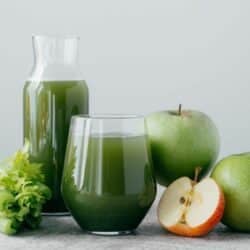

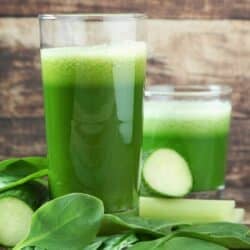








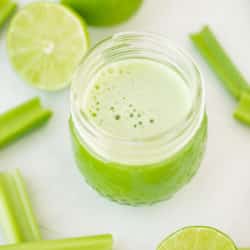






The recipes were very easy to read. Do you have a Juicing/Smoothie book out for purchase?
Thank you so much! I don’t have a juicing or smoothie book, but just all of the recipes on my site. You can check the recipe index just for juices or smoothies! 🙂 https://www.cleaneatingkitchen.com/recipes/